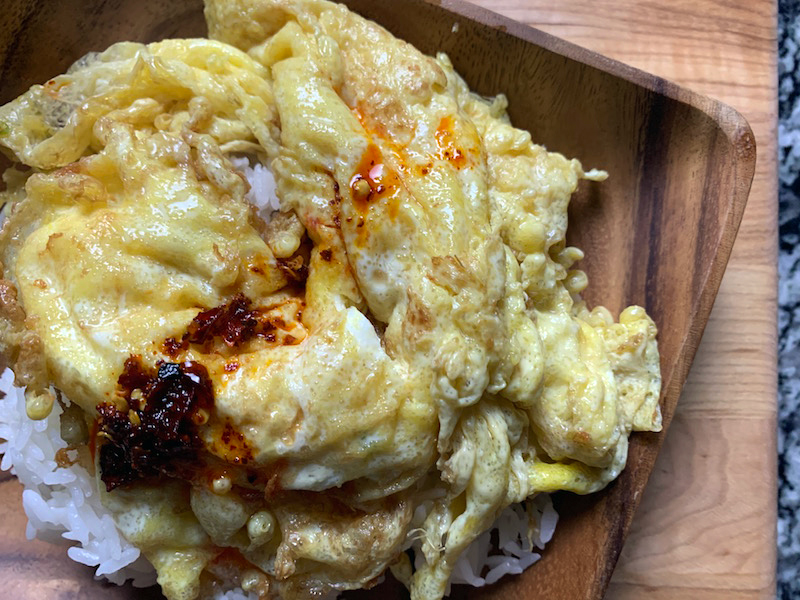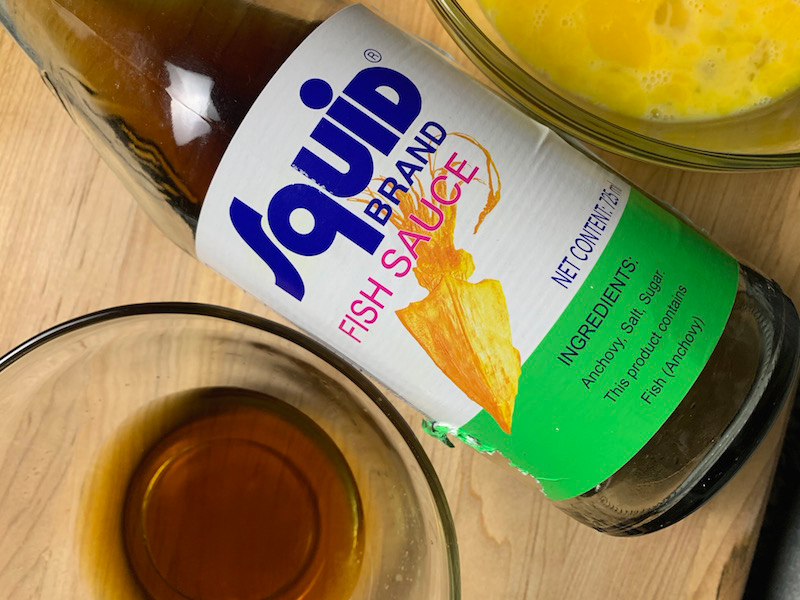This column is underwritten with generous support from United Noodles, Minnesota’s largest Asian grocery store, awarded “Best International Grocery” by City Pages in 2014, 2016, and 2020. Chandra Walbolt is a professional chef with experience at several restaurants in the Twin Cities, and she currently serves as a manager at Union Hmong Kitchen. She will soon be the Executive Sous Chef at Yia Vang’s Vinai in Northeast Minneapolis.
Liquid gold.
That is the best way for me to describe the by-product of anchovies and salt. I never knew what fish sauce really was until my pre-teen years. I faintly remember hearing the words “fish” and “sauce” together and gagged at the thought of it. Little did I know, I had probably consumed liters of it by that age.
Fish sauce was used as a seasoning in nearly everything my mom cooked, but the first time I distinctly remember having it was when she made nuoc cham, which translates from Vietnamese to “dipping sauce.” This savory, umami, spicy, sour condiment was eaten with anything and everything and I have continued to make it and eat it with anything and everything.
 Think of fish sauce like salt, but better. In my kitchen, it is always on hand to add depth and flavor to nearly any meal. Although it is very strong on its own, a little bit goes a long way in curries, broths, and marinades.
Think of fish sauce like salt, but better. In my kitchen, it is always on hand to add depth and flavor to nearly any meal. Although it is very strong on its own, a little bit goes a long way in curries, broths, and marinades.
Time is the essence of fish sauce. A good fish sauce contains two ingredients: fish (something fatty and boney, usually anchovies) and salt. Sometimes sugar is added for a little more balance. The rest of the depth comes from time, sitting in a vat, fermenting into a flavor unmatched. This process can take anywhere from two months to two years. After the fermentation, the macerated anchovies get strained out, leaving this deep golden-amber liquid. This is naturally the most flavorful. Some places will filter it several times to have more of a clear aesthetic. The earliest record of this fermented fish product was recorded in China over 2300 years ago, and has since then enhanced food in various parts of Asia and even (as “garum”) in ancient Rome.
There are so many brands of fish sauce out there, which one do you choose? I am biased toward Three Crabs brand for everything, even though it isn’t fish sauce in its purest form. Check out this video where Chef Josh of LoveFoodMore blind tastes and evaluates different fish sauces. I highly recommend you to subscribe to him for more culinary adventures (and that has nothing to do with the fact that he is my brother).
You can find various brands of fish sauce at your local Asian market. For storage, you can refrigerate or leave at room temp and it will be safe to consume indefinitely.
The recipe below is a simple Thai Omelette, Kai Jeaw. This dish is one of the first things I learned how to cook as a child when easy mac and corn dogs just weren’t hitting the spot. It’s a very easy recipe – you just want to be careful with the hot oil. (That this is also super cheap is just an added bonus.)
With how straight-forward it is, you can easily taste how a little bit of fish sauce transforms something as simple as eggs. This is how I like my Kai Jeaw, but you can feel free to add seasoned pork and/or various vegetables and herbs.
 KAI JEAW (THAI OMELETTE)
KAI JEAW (THAI OMELETTE)
Serves: 1
Time: 10 minutes
Need: Deep pot or wok, fish spatula or spider strainer
2 Large eggs, room temp
1.5 Tbsp Fish sauce of choice
⅛ tsp white sugar
¼ of a small yellow onion, sliced
Oil for frying (varies on size of your pot, you want about an inch of oil at the bottom of your pot)
 Whisk eggs and fish sauce together, the egg doesn’t have to be perfectly mixed. I personally like a little separation between the egg and the yolk. Add onion.
Whisk eggs and fish sauce together, the egg doesn’t have to be perfectly mixed. I personally like a little separation between the egg and the yolk. Add onion.
Heat your oil on medium-high heat, add a small amount of egg mix into the oil to test the temperature. It should sizzle immediately. Once your oil is ready, pour egg mix into hot oil, slowly in a circular motion.
Let the one side cook until deep golden brown, the egg mix will bubble and crisp up. Don’t worry, we REALLY like that. After 2-3 minutes, flip carefully with fish spat or spider and let the other side crisp up. It shouldn’t take more than 1 minute.
Use your spatula or spider to lift the egg mix out of the oil and drain as much excess oil as possible and you’re done!
I can eat Kai Jeaw for breakfast, lunch and dinner. My favorite is with steamed jasmine rice, and any hot sauce whether it be Nuoc Cham, chili oil, or Sriracha.

